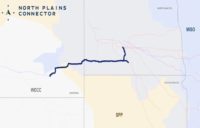Teaching engineering in K-12 grades would not only boost interest in the profession and in technical careers in general, but would also improve all students’ problem-solving, systems-thinking and teamwork skills, says the National Academy of Engineering in a Sept. 8 report. Even so, very few U.S. schools now include the discipline or have enough trained faculty to teach it. Says NAE: “Engineering might be called the missing letter in STEM [science, technology, engineering and math] education.”

The study, the first in-depth analysis of K-12 engineering education in the U.S., was largely sponsored by Stephen D. Bechtel Jr., retired chairman of Bechtel Group Inc., San Francisco. Acknowledging the sparse data, NAE believes about 6 million students have been “exposed” to engineering instruction since the early 1990s, but that number is a small fraction of the K-12 population in the U.S., about 56 million in 2008.

KATEHI
The study found that only about 18,000 teachers are trained to teach K-12 engineering, there are few clear standards or qualifications, and there is wide disparity in how both student and professional curricula interpret engineering and design concepts and relate them to other STEM subjects. “The treatment of key ideas in engineering...is much more uneven, and in some cases suggests a lack of understanding on the part of curriculum developers,” states the report.
The NAE team identified and studied more than 30 major K-12 engineering instruction programs and curricula, with about half analyzed in-depth, the report says (see chart). The report cautions that its review may not be comprehensive.
Alan G. Gomez, an engineering instructor at the University of Wisconsin and a member of the NAE report committee, coordinates engineering and technical education for public schools in Sun Prairie, Wis., near Madison. He cites challenges in getting school superintendents, curriculum coordinators and principals to understand and adopt engineering instruction. "It's not really tested in schools," he says. In the district's high school engineering program, in which Gomez also teaches, students design and build prototype racing cars. "Engineering students can attack problems with a higher consistency than other students and carry out thought processes from concept to design more frequently," he says. Gomez is now hoping to develop the district's program for use nationwide and eventually in other countries.
But the report touts some success. The Math/Science/Technology interdisciplinary degree for elementary school teachers at the The College of New Jersey, a 6,000-student school in Ewing, requires coursework in all STEM subjects. Begun in 2002, the program now has 150 graduate and current enrollees and is one of the school’s fastest-growing majors, NAE says. But it acknowledges sparse data on how many grads pursued engineering- education careers.
“Problem-solving, systems thinking and teamwork aspects of engineering can benefit all students, whether or not they ever pursue an engineering career,” says Linda Katehi, chancellor of the University of California, Davis, who chaired the NAE committee of 15 academics, educators and practitioners that authored the report. “A K-12 education that does not include at least some exposure to engineering is a lost opportunity for students and for the nation.”
| Program and Grade Level | Developer |
|---|---|
| Pre-K | |
| Young Scientist Series—Building Structures | Educational Development Center, Newton, Mass.* |
| Elementary School | |
| Children Designing and Engineering | The College of New Jersey, Ewing, N.J. |
| City Technology/Stuff That Works | City College of New York, New York, N.Y.* |
| Engineering is Elementary | Museum of Science, Boston, Mass.* |
| Full Option Science System (FOSS) | Lawrence Hall of Science, University of California-Berkeley* |
| Invention, Innovation and Inquiry (I3) | International Technology Education Association, Reston, Va.* |
| Middle School | |
| Design and Discovery | Intel Corp., Santa Clara, Calif.* |
| Learning by Design | Georgia Institute of Technology, Atlanta |
| LEGO Engineering | Tufts University, Medford, Mass. |
| Technology Education: Learning by Design | Hofstra University, Hempstead, N.Y. |
| High School | |
| Designing for Tomorrow | Ford Partnership for Advanced Studies, Dearborn, Mich.* |
| DTeach | University of Texas-Austin |
| Engineering: An Introduction for High School | Arizona State University/CK12 Foundation, Tempe, Ariz. |
| The Infinity Project | Southern Methodist University, Dallas, Texas* |
| INSPIRES | University of Maryland-Baltimore County |
| Introduction to Engineering Design | Project Lead the Way, Clifton Park, N.Y.* |
| Material World Modules | Northwestern University, Evanston, Ill.* |
| Principles of Engineering | New York State Dept. of Education/Hofstra Univ. |
| What is Engineering? | Johns Hopkins University. Baltimore, Md. |
| Other | |
| TeachEngineering.org | Five-university collaboration (part of the National Science Digital Library) |
| *K-12 engineering education curricula and faculty instruction programs analyzed in more detail by NAE | |
| Source: National academy of engineering | |







Post a comment to this article
Report Abusive Comment